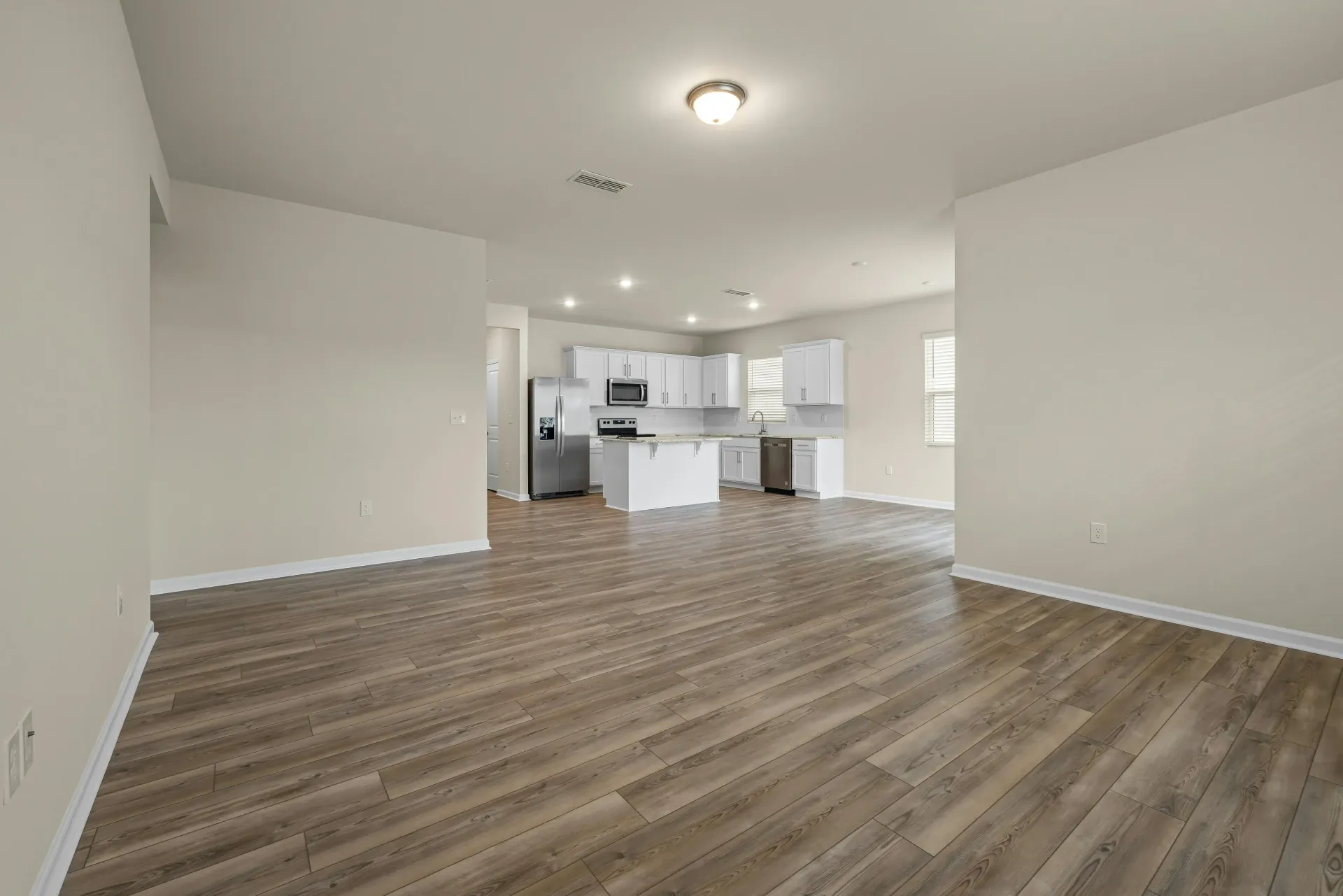How to Choose the Right Contractor for Your Remodel
Taking on a home remodel is an exciting journey, but it can quickly turn stressful if you don't have the right contractor by your side. Your home is likely your biggest investment, and the person you trust to transform it needs to be reliable, skilled, and honest. Finding that perfect match might seem overwhelming with so many options available.
To choose the right contractor for your home remodel, you need to research potential candidates, check licenses and insurance, review past work and references, get detailed written estimates, verify their communication style matches yours, and ensure they understand your vision. These steps will help you find a professional who can deliver quality work while respecting your budget and timeline.
The contractor you select will be working in your personal space for weeks or even months. They'll make decisions that affect the value of your home and the comfort of your daily life. That's why taking the time to choose wisely isn't just important—it's essential for the success of your project and your peace of mind.
Understanding What You Need Before You Begin
Before you start looking for a contractor, you must know what you want. This is the way of wisdom passed down through many generations. Sit quietly with your thoughts and picture your home as you wish it to be.
Write down the changes you want. Do you need a bigger kitchen with new cabinets? Or maybe a bathroom with a walk-in shower? Be clear about what you seek, so you can tell the contractor your vision.
Think about your budget too. How much money can you spend on this work? Many people forget this step and then feel sad when they learn the true cost. Knowing your spending limit helps the contractor suggest the right materials and plans.
Also, think about timing. When do you want the work to start and finish? Some seasons are busier than others for home work. If you need your kitchen done before a big family gathering, make sure the contractor knows this.
Types of Contractors to Consider
There are different kinds of contractors, like different kinds of animals in the forest. Each has its own strengths.
General contractors manage the whole project. They hire other workers and make sure everything gets done right. They are like the wise elder who leads the village. These contractors are good for big projects that need many kinds of work.
Specialty contractors do one type of work very well. There are plumbers for water pipes, electricians for wires, and carpenters for wood. They are like hunters who focus on tracking one animal. These contractors are good when you only need one kind of skill.
Design-build firms do both the planning and the building. They are like those who can both see visions and make them real. These firms can be good if you want one group to handle everything from start to finish.
How to Find Good Contractors
Finding good contractors is like looking for good hunting grounds. You must know where to look.
Ask friends and family who have had work done on their homes. Their stories will tell you who is trustworthy and who is not. These personal recommendations often lead to the best finds.
Look at online reviews on websites like Google, Yelp, or Angie's List. Many people share their experiences there, both good and bad. Look for contractors who have many good reviews over a long time.
Visit home shows in your area. These are gatherings where many contractors show their work. You can meet them face to face and see examples of what they can do.
Check with the local builders association in your area. They often have lists of members who follow good practices.
Checking Credentials and Experience
Before trusting someone to work on your home, check that they have the right licenses. Each state has different rules. A true contractor will have the papers that show they know the laws and building codes.
Ask for proof of insurance too. Good contractors carry insurance that protects you if a worker gets hurt or if they damage your home. Without this, you could face trouble like a hunter without a weapon.
Look at how long they have been working as a contractor. Experience brings wisdom. A contractor who has faced many challenges knows how to solve problems that may come up.
Ask to see their past work. Pictures are good, but visiting homes they have worked on is better. This shows you the quality of their craftsmanship, like seeing a basket well-woven or a pot well-fired.
Getting and Comparing Estimates
When you find contractors you might hire, ask each one for an estimate. This is their promise of how much the work will cost and how long it will take.
Make sure each estimate has the same details so you can compare them fairly. They should list all the materials, the cost of labor, and a timeline for the work.
Be careful of estimates that seem too low. Like a trap that is too easy to spot, they may hide costs that will show up later. If one price is much lower than others, ask why. There may be a good reason, or they may be leaving things out.
Ask about payment schedules too. You should never pay the full amount before work begins. A fair payment plan might ask for some money at the start, then more as different stages of work are finished.
Checking References and Past Work
Talk to people who have hired the contractor before. These references can tell you about their own journeys. Were they happy with the work? Did the contractor finish on time? Did they stay within budget?
Ask questions like:
- Did the contractor listen to your needs?
- Were there surprises in the final cost?
- How did they handle problems that came up?
- Would you hire them again?
If possible, visit homes where the contractor has done similar work. This lets you see the quality with your own eyes, like touching a well-made tool to feel its balance and strength.
Understanding the Contract
The contract is like a sacred promise between you and the contractor. It should be written down and clear about all parts of the work.
A good contract includes:
- Detailed description of the work
- List of materials to be used
- Start and end dates
- Payment schedule
- Warranty information
- Process for making changes
- How disputes will be handled
Read every word before you sign. If there are parts you don't understand, ask questions until you do. A worthy contractor will take the time to explain, just as an elder takes time to teach.
Red Flags to Watch For
Be on guard for signs that a contractor may not be trustworthy. These warnings are like the sounds in the forest that tell you danger is near.
Be careful if a contractor:
- Wants full payment before starting work
- Has no physical address or proper business cards
- Pressures you to decide quickly
- Won't provide references
- Asks you to get the permits
- Gives an estimate that seems too good to be true
- Cannot show proof of insurance
- Has many complaints online or with the Better Business Bureau
Trust the feelings in your heart when you meet with them. If something feels wrong, like the quiet before a storm, listen to that warning.
Communication and Chemistry
The contractor will be in your home and around your family. You must feel comfortable with them and their workers.
Pay attention to how they communicate. Do they answer your questions clearly? Do they return your calls or messages quickly? Good communication flows like a clear stream.
Notice if they truly listen to what you want. Do they offer ideas that match your vision, or do they push their own plans? A good contractor respects your wishes while offering helpful advice.
Trust grows from honest words and actions that match those words. If a contractor promises to send an estimate by a certain day but doesn't, this may be a sign of how they will handle the work itself.
Setting Clear Expectations
Before work begins, make sure both you and the contractor understand what will happen. Clear expectations prevent the fog of confusion.
Talk about:
- When workers will arrive and leave each day
- How they will protect your home from dust and damage
- Where tools and materials will be stored
- Which bathroom workers can use
- How trash will be handled
- Who will be your main contact person if you have questions
- How often you will get updates on the progress
Write these agreements down so both sides remember them. This prevents the misunderstandings that can poison good work.
Managing the Project
Once work begins, stay involved but don't hover like a hawk. Trust the contractor to do their work, but keep your eyes open.
Have regular meetings to check on progress. These can be short talks at the end of a work day or more formal sit-downs once a week.
Keep a journal of the work done each day. Take pictures too. This record helps if questions come up later about what was done when.
Put all change requests in writing. If you decide you want something different than what was in the contract, make sure both you and the contractor agree on the new plan and any changes to the cost.
Handling Problems That Arise
Even with good planning, problems may come up. How you and the contractor handle these tests shows the strength of your partnership.
If you see work that doesn't seem right, speak up quickly but respectfully. Describe what concerns you and ask for an explanation.
If there are delays, ask why and what will be done to catch up. Weather can slow outdoor work, and sometimes materials are hard to find. A good contractor will tell you about these challenges.
If you cannot solve a problem by talking, look at your contract to see how disputes should be handled. Some contracts mention mediation, where a neutral person helps both sides find a fair answer.
Making Final Payments
Before making your final payment, walk through the finished project with the contractor. This is called a punch list inspection. Make a list of any small jobs that need to be finished or fixed.
Ask for any warranties on products or work. These are promises that things will be fixed if they break within a certain time.
Make sure you have copies of all permits and inspection reports. These papers show that the work was done according to local rules.
Only make the final payment when all work is truly done and you are happy with it. This is your right as the one who pays for the journey.
Conclusion
Choosing the right contractor is a path that requires care and attention. By doing your research, checking credentials, getting detailed estimates, and trusting your instincts, you can find someone who will respect your home and vision.
Remember that the cheapest option is not always the best. Look for value in quality work, honest communication, and reliability. A good contractor brings not just skill but wisdom to your project.
Your home is a sacred space that holds your life and memories. The one who helps you reshape it should honor that importance. With the right contractor, your remodel can be a journey of creation rather than a time of stress.
For residents of Centerville, UT and surrounding areas, Foundation Finishes offers expert basement finishing, home remodels, additions, and bathroom and kitchen remodeling services. Their team brings years of experience, proper licensing, and a deep respect for your home and vision. Contact Foundation Finishes to discuss your project and experience the peace of mind that comes from working with trusted professionals.


